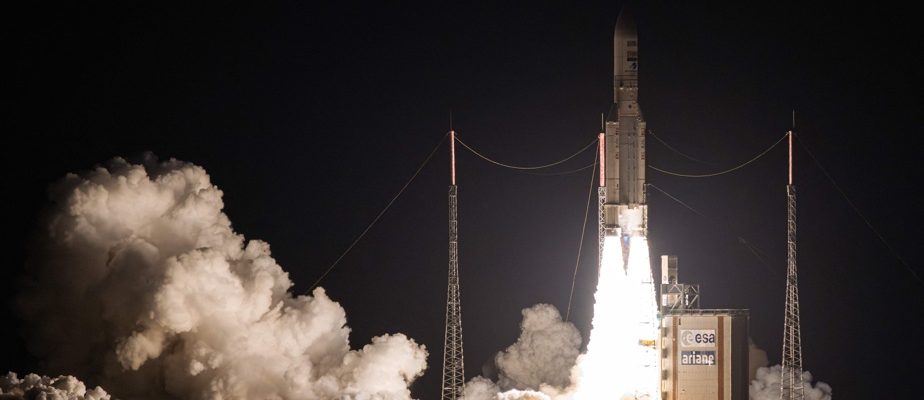(Kourou) A page turns: after 27 years of service and two postponements of its final flight, the Ariane 5 rocket bowed out on Wednesday evening in Kourou, French Guiana, by sending a French and a German satellite into orbit.
Ariane 5 took off successfully at 7 p.m. local time (6 p.m. Eastern time) from the Guiana Space Center (CSG) in Kourou, the third time being the good one after two postponements: June 16 for a technical reason then June 4 July because of the weather.
“It’s a success,” commented the director of the space center, Marie-Anne Clair. “The CSG was at the rendezvous of this historic event”.
The French military communications satellite (Syracuse 4B) and the German experimental satellite separated from the launcher after about thirty minutes to be placed in orbit.
The first postponement was due to “non-conformities” on the control lines involved in the separation of boosters from the rocket. As for the second, it had been caused by “adverse high-altitude winds” over the space center, causing a 24-hour delay.
On Wednesday evening, the final launch of Ariane 5 took place without incident under the eyes of hundreds of spectators gathered on site, including local officials and the former French Minister of Justice, Christiane Taubira.
“This launcher is quite a symbol,” says Carine Leveau, director of space transport at the National Center for Space Studies (CNES). “Ariane 5 gave us a lot of emotions,” she continues.
Some collaborators let their joy burst after the successful takeoff, while applause greeted the second separation.
The putting into orbit of the French satellite “marks a major turning point for our armies: better performance and better resistance to interference”, welcomed the French Minister for the Armed Forces, Sébastien Lecornu, on Twitter.
Rosetta, James Webb, Juice
It was 117e flight of the rocket, which had a difficult start: it had exploded just after takeoff during its maiden flight in 1996. The device then suffered only one other failure, in 2002. “We took two years to return to flight,” recalled the technical director of the ArianeGroup prime contractor, Hervé Gilibert.
The rest of the story is a chain of successes, Ariane 5 forging a reputation for reliability such that NASA even entrusts it with its emblematic James Webb telescope, worth ten billion dollars. The launch, successful on Christmas Day in 2021, marks the apotheosis for the one who sent the Rosetta probes to comet Tchouri (2004) and Juice to Jupiter in April 2023.
Twelve countries participated in the manufacture of this heavy launcher. With a launch capacity doubled compared to Ariane 4, the fifth of the name allows Europe to impose itself on the satellite market, taking advantage of a “trough” on the American side. A situation reversed since.
The shutdown of Ariane 5 is due in particular to its “too high” cost, explains Toni Tolker-Nielsen, director of space transport at ESA. Technically, however, “it is not outdated”.
This farewell flight of Ariane 5 will be followed by long months of emptiness while waiting for the future N.6 – at best at the end of 2023 – whose deployment suffers from cumulative delays.
More powerful and more competitive with costs halved compared to Ariane 5, Ariane 6 was designed to withstand Elon Musk’s American company SpaceX, which carries out more than one launch per week.
The tests for his qualification are in full swing, but the atmosphere is gloomy in Kourou. The end of Ariane 5 will result in 190 job cuts out of 1,600, as the new rocket has reduced manpower and maintenance requirements.
